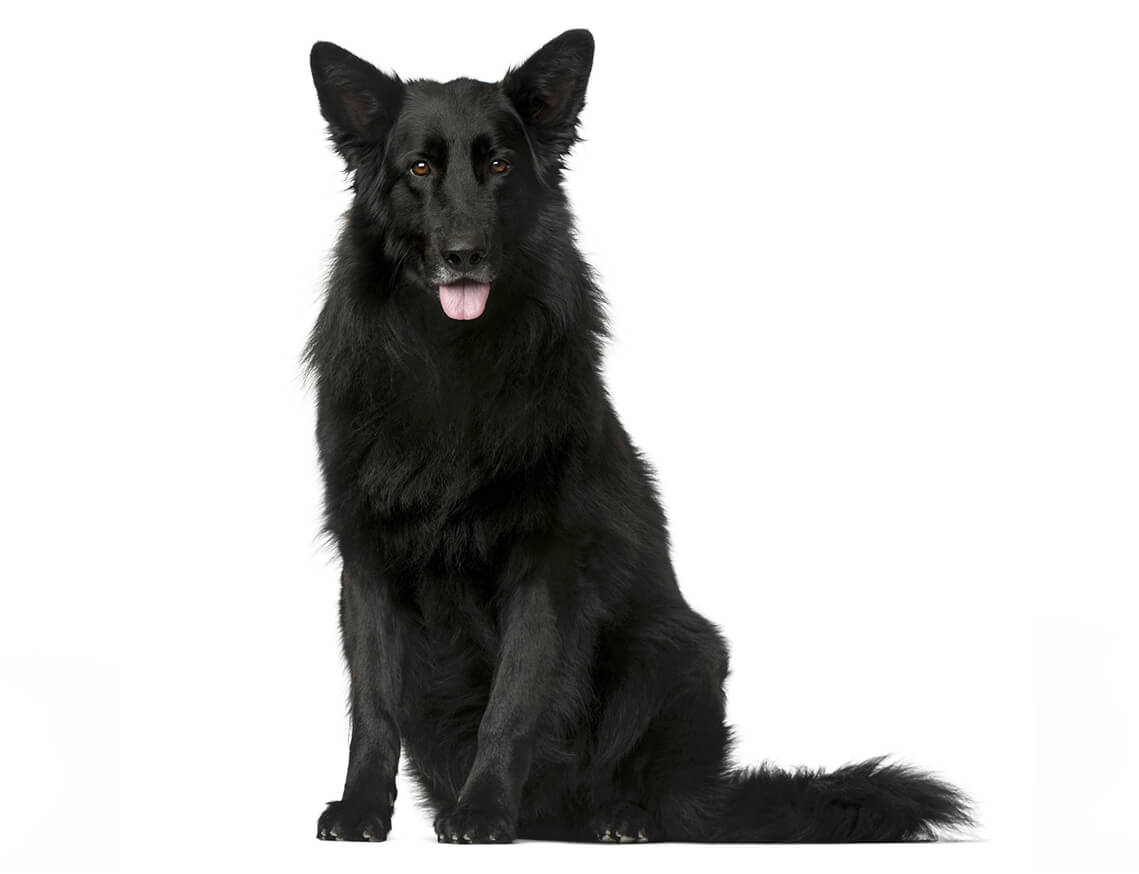
An elegant, muscular dog, the Belgian Sheepdog is a loving companion that excels as a herding and guard dog. Originating in the 1800s, the Belgian Sheepdog is an intelligent, easily trained, active breed that does best when given a job or purpose. One of four types of Belgian sheepherding dogs, he is distinguished by his long, black coat, which has a dense undercoat and requires weekly brushing.
DID YOU KNOW? During both World Wars, Belgian Sheepdogs proved themselves valuable by working as message carriers, ambulance dogs and pulling machine guns. The first Belgian Sheepdog kennel was established by Nicholas Rose of Groenendael, Belgium, and his black sheepdogs, Petite and Picard d’Uccle.
ALSO KNOWN AS: Belgian Sheepdog, Chien de Berger Belge
The need-to-know
- Dog suitable for owners with some experience
- Extra training required
- Enjoys vigorous walks
- Enjoys walking more than two hours a day
- Large dog
- Some drool
- Requires grooming every other day
- Non hypoallergenic breed
- Chatty and vocal dog
- Guard dog. Barks and alerts
- May require training to live with other pets
- May require training to live with kids
Personality

The Groenendael is an affectionate, devoted companion that wants to join in with everything. Their natural dog guarding instincts will kick in if and when they sense it is necessary. They will protect their home and family, so it is not advisable to encourage his guarding instincts when young, as he could start guarding you in 'normal' situations. Early, thorough socialisation is imperative with this breed.
History and Origins

There are four varieties of Belgian Shepherd Dog – the Groenendael, Tervueren, Malinois and Laekenois – named after the areas in Belgium from which they came. Hardworking sheepdogs from Belgium have been recognised since the Middle Ages. In the 1890s a professor of the Belgian School of Veterinary Sciences recorded standards for the various types of Belgian sheepdogs. It was noted that they were all similar in type with the main difference being the coat. The professor then divided them into varieties and advised breeding them as separate breeds. The Groenendael dog breed was developed from a black bitch of the Belgian sheepdog type being crossed with another black herding dog. The resulting litter became the precedent of the Groenendael.
Nutrition and Feeding

Large breed dogs, as well as having large appetites, benefit from a different balance of nutrients including minerals and vitamins compared to smaller-breed dogs.
Exercise

The Groenendael needs two hours-plus of daily exercise and mental stimulation, and to this end they excel at agility and obedience. They are very active dogs and should not be considered as pets if they are to be left alone all day.
Other Information

Health and common issues
As with many breeds, all varieties of the Belgian can suffer from hereditary eye disorders, and hip dysplasia (a condition that can lead to mobility problems). Eye testing and hip scoring of dogs prior to breeding is therefore important.
Best family dog breeds
While many dogs are traditionally thought of as being good with children , all dogs and children need to be taught to get on with and respect each other, and be safe together. Even so, dogs and young children should never be left alone together and adults should supervise all interactions between them.